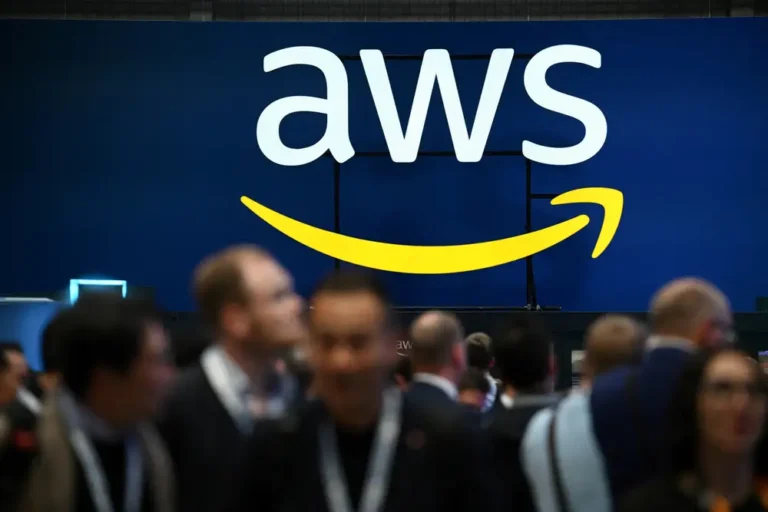How to save the tech industry

Silicon Valley needs to get rid of overpowered managers and put builders back in charge.
Open up Instagram and see how quickly your feed is interrupted by a piece of suggested content or an ad. It will likely be the second or third thing you see. Open up Facebook, and you’ll see much the same thing: recommendations to join random groups, AI-generated content, or comments from scammers hawking cryptocurrency.
Over on Google, you’ll find similar decay. Search results are worse than ever, chock-full of spam, generic affiliate-monetizing content, and unhelpful links. Worse still, Google is now testing using AI-generated answers in search results, leading to recommendations to put glue on your pizza.
One might think the outright deterioration of their core products would be a problem for these companies, but Meta (home to Instagram and Facebook) and Alphabet (Google and YouTube’s parent company) are still raking in cash. Alphabet beat first-quarter expectations in late April and announced its first-ever dividend, along with a $70 billion stock buyback. Meta’s first-quarter profits more than doubled from the same period last year thanks to $36 billion in advertising revenue, a 27% increase from the year before.
The fundamental disconnect between the user experience and the companies’ financial results is the result of what I call the Rot Economy — a push by executives to turn companies into insatiable revenue-growth machines at the cost of consumer happiness and product functionality. This disastrous mindset has hollowed out Silicon Valley’s ability to innovate and caused regular people to grow increasingly frustrated with everyday tech.
The large platforms have generally ignored this feedback for one big reason: The tech industry has been taken over by career managers. The upper echelons of Silicon Valley’s most powerful companies — OpenAI, Google, Microsoft, Amazon, Oracle, Adobe, Meta — are dominated not by people who know how to build but by MBAs, management consultants, and pencil pushers.
Elon Musk wades in on Scarlett Johansson’s dispute with OpenAI
What can save these companies is returning the tech industry to the people who actually build tech to solve problems, creating sustainable, meaningful markets based on fulfilling customer needs rather than increasingly complex growth machines that make customers’ lives worse for profit.
Developers build it, managers tear it up
Builders dominated Silicon Valley’s early years. Companies like Apple and Hewlett Packard were literally built in garages, as was Adobe, which was started by two computer scientists who left Xerox and developed PostScript, a pioneering language specifically built for printers. Both HP and Adobe now have CEOs with MBAs, and both companies have focused on creating shareholder value over meaningful innovation.
In recent years, this tradition of growth through development has been replaced by a desire to hack growth by subtly changing how information is presented — say, in notifications or in the content feed — to make users do things or spend more time on a platform. Instagram’s founders, Kevin Systrom and Mike Krieger, both programmers, were promised autonomy when Facebook acquired the company, but in May 2018 they found themselves ruled by a new master: Adam Mosseri, a former vice president of Facebook News Feed, who started his career as a designer and spent most of his time as a project manager. Systrom and Krieger clashed with Mosseri and Mark Zuckerberg over Facebook’s encroaching on Instagram’s independence, causing them to leave by September 2018. Since then, Instagram has gradually worsened, becoming more aggressively algorithmic and forcing users to see an endless flow of suggested videos, to the point where Kylie Jenner and Kim Kardashian begged Mosseri to “stop trying to be TikTok.” Mosseri is not a technologist or a developer, and the mindset of a person who can’t build things but wants to make a company money is always going to be to change the product to make it more profitable rather than more useful.
This pattern of replacing product-driven people with disconnected managers has been repeated across Silicon Valley. And even when nominally tech-steeped executives take the reins at major platforms, the management-consultant, growth-at-all-costs mindset still seems to seep in.
Take Google, for one particularly gruesome example. Sundar Pichai, who became CEO in 2015, was previously a product manager, a powerful nontechnical role that makes calls about a product they have no hand in building. Under Pichai, the current leader of Google’s core products is Prabhakar Raghavan. Nominally, Raghavan seems like the kind of person who would be committed to pushing products forward — he’s a trained computer scientist who has authored academic papers in the field. But when he joined Google, he specifically did so as management, in what became one of the strangest moments of class treachery in tech-industry history.
In 2019, Raghavan’s ad and revenue teams began to clash with Google’s main search team, then headed by Ben Gomes, a career technologist who helped build Google’s search from the ground up. According to emails released as part of the Department of Justice’s recent antitrust case against Google, the search team was formally flagged because its revenue was down and there wasn’t enough growth in “queries,” as in the volume of searches. Gomes, worried about Google’s advertising arm influencing search, wrote that the push to increase queries seemed to be driven by the advertising team’s rapacious hunger for growth and that his search unit was getting “too close to the money.” Even after a round of changes resolved the search team’s review, Raghavan said that “core query softness continued without mitigation” — in layman’s terms, people were still not searching on Google enough.
This represents the difference between a long-term, product-focused strategy and a short-term, cash-focused strategy. Having more people searching for more things is a good goal, but you also want to give people the answer for which they’re searching. Having to rephrase a query five or six times to find an answer not only is frustrating but undermines the usefulness of the core product. Focusing solely on the number of searches runs contrary to the point of a search engine, as you’re optimizing to make a user do “more” rather than help them complete a query.
Google eventually rolled out a more radical change to how ads were shown in search, and just over a year later Raghavan was made head of search, with Gomes relegated to senior vice president of education. Now Google Search is more profitable and worse, elevating spammy content and outright scams, a problem exacerbated by artificial intelligence.
The fundamental difference is that builders are solutions-driven and managers are metrics-driven. The management-consultant mindset is founded not in understanding or respect for technology but in what can be extracted from technology. Fundamentally, management-driven organizations are looking not to build things to fix consumers’ pain points but to prioritize a nebulous kind of “efficiency” that only makes products worse.
Vision and focus
People have lost faith in Silicon Valley over the past decade in large part because it has failed to deliver on its core promise: making our lives better through technology. There was a time when Facebook and Google were respectable, profitable businesses that connected the world; chasing the dragon of perpetual growth has turned them against their users, making their products worse as a means of extracting more capital. Useful products are profitable products, but returning to utility will require both these companies and Wall Street to remember that growth is not eternal and that eventually users will be driven out when the products themselves turn against them.
But today’s tech products feel built to sell a dream of the future rather than solve a customer’s existing pains. The recent AI hype train seems to be totally divorced from reality — a survey from the Reuters Institute at Oxford University found that very few people were actually using generative AI products like ChatGPT. Yet tech continues to try to force questionably useful ideas down our throats based on the idea that someday AI could do something, even though it’s not clear whether it’s actually possible.
All of this should make you deeply suspicious of any promises made about the future of artificial intelligence by the current crop of Silicon Valley executives. OpenAI CEO Sam Altman, who has spent the vast majority of his career (badly) managing companies, is not the technical power behind OpenAI, nor has he been successful at anything other than making himself and his friends rich. So it’s no surprise that top technical talent like the AI-governance researcher Helen Toner and the famed computer scientist Ilya Sutskever have left the company while people like Larry Summers, the former treasury secretary, and Fidji Simo, the Instacart CEO and former head of the Facebook app at Meta — a career project manager — have come aboard. This might also explain why companies like Google and OpenAI so regularly make promises about AI they can’t seem to keep — because the people making the promises don’t participate in fulfilling them and don’t really understand what it would take to do so.
Silicon Valley has become dominated by people who want to be Steve Jobs while also sharing Jobs’ utter lack of respect for Steve Wozniak, the technical mind who made the company succeed. As long as the tech industry is controlled by people who don’t build things, it will continue to build products that help raise growth metrics rather than help consumers with tangible problems.
A better tech industry is one where executives default to engineers, where success is derived not just from a company’s ability to grow every quarter but from its ability to improve the lives of its customers. Google, Instagram, and Facebook were created by, built by, and grown by engineers who wanted to connect and help people rather than find increasingly obtuse ways to grow revenue.






